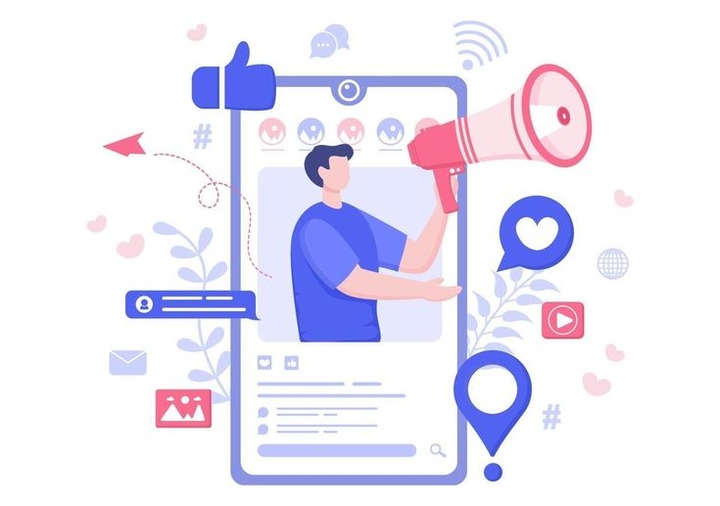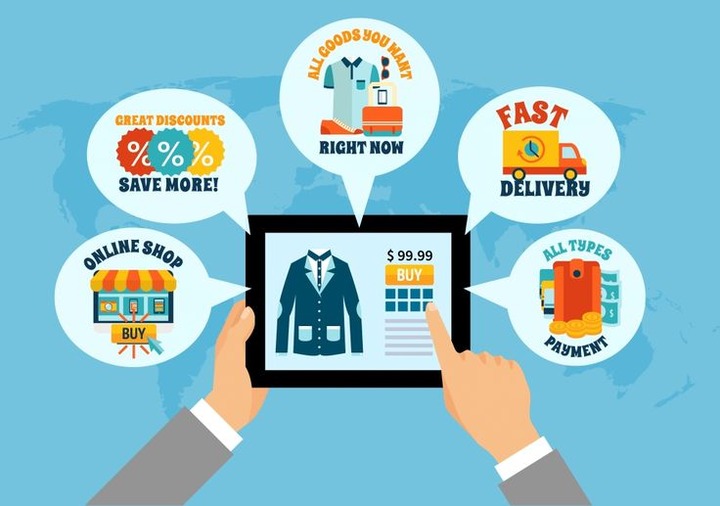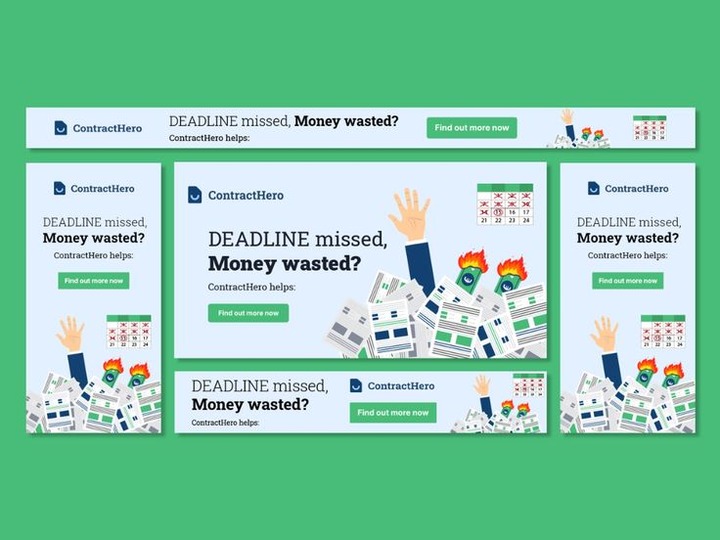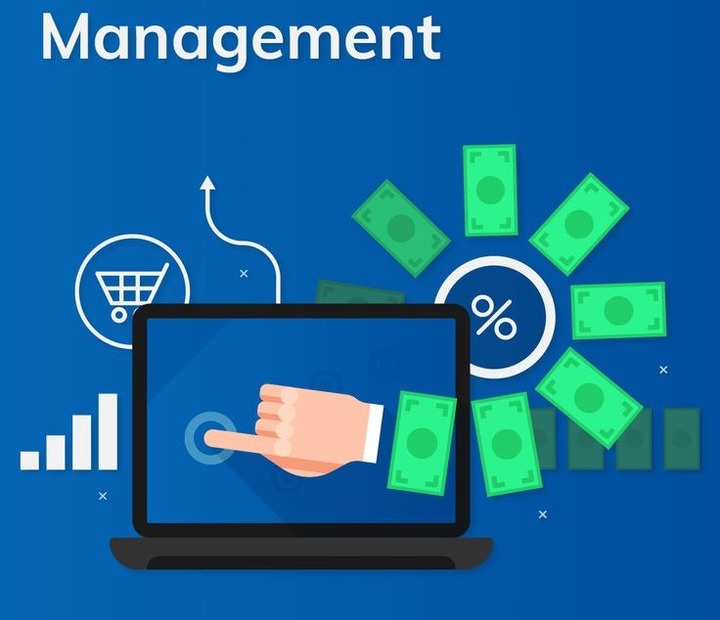Finding the right digital advertising platforms is key for any business looking to connect with audiences and drive results online. As we will cover in this guide, platforms like Google Ads, Facebook Ads, Amazon Ads, and beyond each offer unique capabilities and strengths. To make the most of these opportunities, partnering with an experienced digital marketing agency is advised. Bigfourth is a premier Google Ad Exchange and AdSense management company dedicated to maximizing ROI from digital advertising.
Introduction to digital advertising platforms
Digital advertising platforms allow businesses and marketers to create, manage, and optimize online ad campaigns across various channels. With the rise of digital marketing, these platforms have become essential tools for connecting with target audiences and driving results.
There are many types of digital advertising platforms available today, each with their own strengths and ideal use cases:
Social media advertising platforms like Facebook ads and Instagram ads allow you to place native ads within popular social networks to reach highly targeted audiences.
Display advertising platforms facilitate the placement of banner, video, and native ads across websites, apps, and more.
eCommerce advertising platforms like Amazon ads enable product and brand promotion directly within marketplaces.
Online video advertising platforms like YouTube ads allow you to connect with viewers through engaging pre-roll and in-stream video ads.
Mobile ad platforms like AdMob provide ways to reach users on smartphones and tablets via in-app ad placements.
And more.
Digital advertising platforms share some common traits:
- Easy ad campaign creation, management, and optimization
- Advanced targeting and segmentation options
- Reporting and analytics on performance
- Access to large publisher and media networks
But they differ based on the types of ad formats offered, pricing models, unique features, and channels accessed.
| Platform | Ad Formats | Pricing Models | Key Features |
| Google Ads | Text, display, video, app, shopping | CPC, CPV, CPM | Advanced targeting, robust analytics |
| Facebook Ads | Image, video, carousel, Stories, more | CPC, CPM, CPV | Lookalike audiences, detailed targeting |
| YouTube Ads | Video ads | CPV, CPM | Popular platform, video creation tools |
Choosing the right platform depends on your goals, target audience, budget, ad formats needed, and more. Testing different options is key to find the best fit.
Key metrics to track success of digital advertising campaigns include:
- Impressions – How often ads are served
- Clicks – How often ads are clicked
- Conversions – How often users take desired actions
- ROI – Return on ad spend
With the right platforms and strategies, digital advertising platforms can deliver tremendous value by connecting businesses with receptive audiences to drive results.
This guide provides an in-depth look at today’s top digital advertising platforms and how to leverage them for success.
Mobile Ad Platforms

Mobile devices like smartphones and tablets have become the dominant digital advertising platforms, with users spending most of their time on apps and mobile sites. This makes mobile ad platforms essential for reaching audiences in a mobile-first world.
Mobile ad platforms allow advertisers to buy ad inventory and serve targeted ads within mobile apps and sites. There are a number of leading options:
A. Google Ads
As the top search engine, Google offers robust mobile advertising capabilities. Key features include:
- App and site targeting
- Location targeting
- Demographic and interest targeting
- Support for all ad formats
With Google Ads, you can advertise on:
- Google Search – Text, image and video ads in mobile search results
- YouTube – Video ads on YouTube’s mobile app
- The Google Display Network – Banner and native ads on mobile sites/apps
- The Google Play store – Promoting Android apps
B. Meta Ads
Meta (Facebook) Ads makes it easy to reach over 2 billion monthly active users on Facebook and Instagram.
- Create native video and image ads for Facebook’s News Feed and Instagram’s Feed
- Leverage Meta’s detailed audience targeting data
- Measure ad results and optimize for conversions
In addition to their main platforms, Meta Ads can also help you reach audiences on third-party mobile sites and apps via the Meta Audience Network.
C. Bing Ads
Though smaller than Google, Bing still garners significant mobile search volume you can tap into.
- Create text, image, and video search ads on Bing mobile search
- Target user interests and context to improve relevance
- Lower costs than Google – good for testing
Bing also powers search on platforms like Yahoo, allowing expanded reach. Their audience network further allows mobile app promotion.
| Platform | Key Benefits | Considerations |
| Google Ads | Most reach, advanced targeting | Most expensive |
| Meta Ads | Massive mobile audience | Less search volume |
| Bing Ads | Lower costs, interest targeting | Much smaller audience |
When weighing mobile ad platforms, look at your goals, target users, ad budget and more. Testing across multiple can maximize reach.
Measuring Mobile Ad Success
To measure mobile ad performance, track key mobile advertising metrics:
- Impressions – Ad views
- Clicks – Ad taps
- CTR – Click-through rate
- Installs – App installs
- Conversions – Sales, sign-ups, etc.
Analyze metrics across creatives, placements, devices, demographics and more to uncover optimization opportunities. This allows you to refine targeting and creative over time.
With more digital media consumption happening on mobile, digital advertising platforms marketers must have a strategy for advertising on mobile platforms. The major networks offer proven ways to reach and engage these audiences.
Online Advertising Platforms

In addition to social and search ads, marketers should also consider dedicated online advertising platforms that provide expanded reach through publisher partnerships. These facilitate ad placement on thousands of sites and apps.
A. Facebook Ads
As the dominant social network, Facebook Ads makes it easy to create and optimize ads that users see in their feeds and Groups.
- Create video, image, Stories, and slideshow ads
- Leverage Facebook’s detailed audience data for targeting
- Track conversions and optimize for sales or sign-ups
Ads appear in-feed and side columns on both desktop and mobile. You can also extend ads into the Facebook Audience Network.
B. Google Ads
Along with search ads, Google Ads supports premium digital advertising platforms:
- Responsive ads adapt layout based on screen size
- Placements on Gmail, YouTube and 2 million sites/apps
- Support for all interactive ad formats
Powerful segmentation and automation streamline large-scale display ad campaigns.
C. YouTube Ads
YouTube offers flexible video ad options to connect with audiences:
- Pre-roll ads – Play before videos
- Bumper ads – Short unskippable 6 second videos
- Mid-roll ads – Inserted in the middle of long videos
- Brand focus – Sponsored spots and brand integrations
YouTube provides strong reach to a receptive video audience. Brand safety controls protect your reputation.
| Platform | Key Benefits | Considerations |
| Facebook Ads | Precise targeting | Limited placements |
| Google Ads | Massive reach | Higher minimum budget |
| YouTube Ads | Engaging video format | More passive consumption |
When evaluating online advertising platforms, consider reach, budget, ideal formats and more. Layering platforms can enhance exposure.
Measuring Online Ad Success
To assess online ad performance, closely monitor:
- Impressions – Ad views
- Clicks – Ad clicks
- CTR – Click-through rate
- Views – Video views
- Conversions – Desired actions
Compare metrics across ad variations, placements and audiences. Use robust analytics to uncover optimization opportunities over time.
Online advertising platforms provide diverse options to engage your audience beyond social media alone. Consider testing search, display and YouTube as complements to your existing efforts.
Social Media Advertising

Social platforms like Facebook, Instagram, LinkedIn, and TikTok have ramped up their advertising capabilities in digital advertising platforms, providing highly targeted ways to reach engaged users.
With social media usage soaring, social media advertising is more important than ever. Here are some top options:
A. Instagram Ads
As a visual platform, Instagram offers immersive ad experiences:
- Photo ads
- Short video ads
- Carousel ads
- Stories ads
- Shoppable posts
Leverage detailed targeting and optimize for conversions or brand awareness.
B. TikTok Ads
TikTok features a range of native video ad formats perfect for creatively engaging its young user base:
- In-feed native video ads
- Brand takeovers
- Branded lenses, filters and effects
- Hashtag challenges
TikTok’s strong calls-to-action can drive traffic to your site, app or products.
C. LinkedIn Ads
With an audience of professionals, LinkedIn Ads work well for B2B marketers:
- Sponsored content
- Text ads
- Dynamic ads
- Message ads
Target by job title, industry, company and interests to reach the right buyers.
| Platform | Key Benefits | Considerations |
| Visual engagement | Limited targeting data | |
| TikTok | Viral video formats | Younger demographic |
| Professional targeting | Narrower audience |
When reviewing social media platforms, assess which aligns best with your audience and content strategy.
Measuring Social Ad Performance
To gauge social ad results, monitor:
- Impressions – Ad views
- Clicks – Link clicks
- Engagement rate – Likes, comments, shares
- Conversions – Purchases, sign-ups
Compare performance by ad creative, copy, audience and placements. Refine based on insights.
With highly engaged built-in audiences, social media advertising can provide a way to cost-effectively reach your target customers. Prioritize platforms where your audience is most active.
eCommerce Advertising

For businesses selling products online, advertising on eCommerce platforms provides a direct way to promote your brand and listings to high-intent shoppers.
Major eCommerce sites offer advanced advertising platforms to connect sellers with their massive built-in audiences.
A. Amazon Ads
As the world’s largest online retailer, Amazon offers sellers sponsored ads to stand out:
- Sponsored product ads – Product listings promoted in search results
- Sponsored brand ads – Top-of-page brand awareness ads
- Display ads – Banner ads on Amazon pages
Amazon’s first-party data enables targeting shoppers by interests, behaviors and more.
B. Taboola
The Taboola discovery platform shows sponsored brand and product recommendations:
- Native recommendations on premium sites
- Targeting by device, location and more
- Promotes brands and drives site traffic
Taboola provides expanded reach beyond Amazon itself.
C. BuySellAds
BuySellAds offers a real-time marketplace for sponsored listings and ads:
- Advertise on niche publishers and apps
- Bid for placements and optimized pricing
- Wide range of creative ad formats
The self-serve platform makes eCommerce advertising accessible for businesses of all sizes.
| Platform | Key Benefits | Considerations |
| Amazon Ads | High intent audience | Limited to Amazon |
| Taboola | Expanded reach | Less purchase intent |
| BuySellAds | Self-serve, niche sites | Smaller scale |
Consider both on-site and off-site eCommerce advertising to maximize visibility.
Measuring eCommerce Ad Performance
Track standard digital advertising platforms metrics plus:
- Cost of acquisition – Cost per purchase
- Sales – Online revenue attributed to ads
- Acos – Amazon’s metric for ROI
Dig into performance by product, keyword, placement and creative. Optimize to drive more quality traffic and lower CPA.
eCommerce advertising platforms provide direct response opportunities for online sellers, complementing broader brand building efforts.
Display Advertising

Display advertising refers to visual ad formats served on websites, apps, and other digital properties. Common formats include banners, native ads, pop-ups, and video ads.
Display ads allow advertisers to reach broad audiences and increase brand visibility through impactful creatives. Here are some top display advertising formats:
Banner Ads
Banner ads include a range of standard ad units like:
Leaderboard – 728×90 pixels
Medium Rectangle – 300×250 pixels
Large Mobile – 320×100 pixels
Banners effectively deliver branding messages. Site-level targeting provides relevance.
Video Ads
Pre-roll, mid-roll, and outstream video ads engage audiences powerfully:
- Capture attention with sight, sound and motion
- Adaptable lengths from 6 seconds to over a minute
- Lead generation and direct response options
Video can tell impactful brand stories while conveying key information.
Native Ads
Native ads match the form and function of the surrounding content:
- In-feed, in-article, and recommendation units
- Advertiser-provided visuals and text
- Clear labeling for transparency
Native placements lead to higher click-through rates due to blending in.
| Format | Benefits | Considerations |
| Banners | Branding capabilities | Banner blindness |
| Video | Storytelling, engagement | Higher production needs |
| Native | Higher click-through rates | Labeling requirements |
Consider both premium and programmatic display advertising to maximize reach.
Measuring Display Ad Performance
Monitor key metrics like:
- Impressions – Ad views
- Clicks – Ad clicks
- CTR – Click-through rate
- Views – Video views
- Conversions – Site actions
Analyze performance by creative, placement, device and daypart. Refine campaigns to drive more value from display.
Display advertising provides visual storytelling and awareness-building to captivate the right audiences. Layer it with targeted efforts to surround customers.
Remarketing/Retargeting Ads

Remarketing (or retargeting) ads allow you to reconnect with website visitors after they leave your site by serving ads across platforms like Facebook, Instagram, Google, YouTube, and more.
This tactic makes sure your brand stays top of mind and gives you another chance to convert visitors into customers.
How Remarketing Works
Remarketing relies on pixels or tags installed on your website which allow visitor tracking:
Cookies capture browsing behavior and page views
Users are tagged for retargeting when they meet defined criteria
Ads are served to tagged users off-site
You control who sees your ads based on granular filters like pages visited or items added to cart. Follow-up messages can be tailored for each audience.
Key Benefits
Remarketing provides advantages like:
- Re-engaging visitors who previously showed interest
- Increased chance of conversion compared to new prospects
- Flexible audience segmentation for personalized messaging
With detailed analytics, you can optimize ads to boost conversions from different visitor segments.
Top Retargeting Platforms
Top ad platforms for deploying remarketing campaigns include:
Facebook – Audiences for website retargeting
Google – Support for search, display, and YouTube retargeting
Twitter – Tailored audiences for promoted tweets
LinkedIn – Matched audiences for sponsored content
Pinterest – Retargeting via Promoted Pins
| Platform | Formats |
| Image, video, carousel | |
| Text, display, video | |
| Text, cards, images |
Combine platforms to achieve omnichannel remarketing at scale.
Measuring Performance
Analyze remarketing ads using conversion metrics:
- Click-through rate
- Cost per click
- Conversions
- Return on ad spend
Compare different audience segments and creatives. Continuously refine based on results.
Remarketing is a proven tactic for reducing wasted ad spend and driving higher ROI from digital advertising platforms campaigns. It deserves a central place in any multi-channel strategy.
Ad Campaign Management

To effectively manage digital advertising platforms campaigns across multiple platforms, robust ad management tools are essential.
Dedicated ad platforms provide advanced capabilities for launching, optimizing and reporting on campaigns.
A. BidVertiser
BidVertiser makes campaign management accessible for small businesses:
- Self-serve account setup and optimization
- Automated bidding and targeting
- Customizable tracking and analytics
The platform reduces workload while maximizing ROI.
B. AdRoll
AdRoll offers powerful optimization features:
- A/B testing for ad variations
- AI-powered visual analysis for image ads
- Automated budget allocation
- Real-time performance monitoring
Robust tools support data-driven optimization.
C. RevContent
RevContent provides full-funnel attribution:
- Tracks user journey from view to conversion
- Uncovers high-performing placements
- Custom reporting and segmentation
Get a holistic view of how ads deliver value.
| Platform | Key Features |
| BidVertiser | Self-serve, automated bidding |
| AdRoll | A/B testing, AI-powered optimization |
| RevContent | Multi-touch attribution |
Look for platforms suited to your business’s size and needs.
Why Management Tools Matter
Robust management tools help:
- Reduce time wasted on manual campaign configuration
- Optimize bids, budgets and targeting automatically
- Uncover insights faster through custom reporting
This allows focusing time on strategy versus manual setup and tracking.
With the right platforms, digital advertising platforms can scale efficiently while continuously improving performance.
Choosing the Right Ad Platform

With countless digital advertising platforms available today, choosing the right one(s) for your business can be challenging.
Consider these key factors when evaluating platforms:
Audience Targeting
Look for platforms that allow you to precisely target your ideal customers:
- Demographic data – age, gender, income
- Geographic targeting – country, city, radius
- Interests, behaviors, and purchase intent
- Custom audiences from CRM data
Precision targeting improves relevance and ROI.
Goals and Objectives
Assess how well each platform supports your campaign goals:
Traffic, leads, and conversions
Brand awareness and engagement
App installs or sales
Remarketing and loyalty
Align platforms with activities needed to hit business KPIs.
Budget
Factor in costs and resources required:
- Minimum ad spend and entry thresholds
- Payment models – CPC, CPM, CPV, etc.
- Production needs – ad design, video, etc.
- Campaign management workload
Leverage options suited to your budget and capacity.
| Platform | Pros | Cons |
| Google Ads | Advanced targeting, massive reach | Most expensive |
| Facebook Ads | Huge audience, detailed data | Video ads require more effort |
| Taboola | Broad reach, self-serve | Lower intent users |
Track KPIs and metrics for each platform to determine ROI.
Choosing the right digital advertising platforms requires aligning capabilities to business goals, audiences, and resources. Test platforms to find the optimal mix.
Metrics for Success
To determine the effectiveness of digital advertising campaigns, marketers must track key performance indicators (KPIs) and metrics.
Monitoring the right measurements allows for optimization and helps maximize return on ad spend.
Key Metrics to Track
Main metrics to assess digital ad performance include:
- Impressions – Number of times ads are served
- Clicks – Clicks on ads
- Click-through rate (CTR) – Clicks/Impressions
- Cost per click (CPC) – What you pay for each click
- Conversions – Desired actions from users
- Cost per conversion – What you pay for each conversion
- Return on ad spend (ROAS) – Revenue from conversions/Spend
Analyzing these metrics enables optimization of creative, targeting, placements and bids to improve results.
Benchmark CTRs:
| Ad Format | Average CTR |
| Search Ads | 1-3% |
| Display Ads | 0.1-0.3% |
| Social Media Ads | 0.9-1.8% |
| Video Ads | 0.4-0.7% |
Other Key Metrics
Additional metrics to track by ad platform include:
View rate – For video ads (% watched at least 10 sec)
Engagement rate – For social ads (likes, shares, comments)
Installs – For app ads
Sales – For ecommerce ads
Leads – For lead gen ads
Digging into segment metrics can uncover optimization opportunities.
Tools for Measurement
Robust analytics tools are needed to track and report on digital advertising performance. Options include:
Google Analytics – Shows full sales funnel journey
Facebook Ads Manager – Built-in analytics for Meta ads
Ad platforms’ dashboards – Performance data and insights
Third-party tracking – Deeper analysis of ad interactions
Using data to refine efforts is key to maximizing advertising ROI over time.
Conclusion
In today’s digital landscape, digital advertising platforms provide powerful avenues to reach target audiences and achieve business goals.
Key points covered in this guide:
The top digital advertising platforms span social, search, video, display, eCommerce and more.
Mobile advertising is critical, with dedicated platforms for in-app and mobile web promotions.
Beyond social ads alone, additional online advertising platforms extend reach further.
For visual storytelling, display ads like banners and video are ideal for engagement.
For customers who visited your site, remarketing ads keep your brand top of mind.
Robust ad campaign management platforms enable automation and optimization.
Choosing the right platforms requires aligning needs to capabilities and testing performance.
Key metrics like impressions, clicks, conversions, and ROI should be tracked.
With the strategies covered in this guide, brands can effectively leverage digital advertising platforms to:
- Raise awareness through creative and engaging ads
- Drive traffic and leads from targeted promotions
- Retain and re-engage visitors through remarketing
- Promote products through eCommerce advertising
- Analyze performance and refine efforts over time
Every business is unique, so testing different platforms and creatives is crucial.
At its full potential, paid digital advertising platforms enable accurate targeting, advanced optimization and full-funnel visibility – at scale.
With the right platforms, savvy advertisers can thrive amid rising competition and clutter.
Website Services and Our Mission
Our strategic Google Ad Exchange solutions provide brands access to premium inventory, powerful optimization tools, and expert guidance. Bigfourth leverages advanced targeting, machine learning, and multi-channel placements to drive higher campaign performance.
With transparent services, dedicated account management, and customized reporting, Bigfourth enables brands to capitalize on Google’s unparalleled scale and advanced advertising technology. Our Google AdSense management services help publishers earn more revenue by optimizing sites, ad units, and page layouts for top performance.
With Bigfourth, your display, video, and native advertising needs will be fulfilled, you gain experience from over 15 years of digital marketing expert team. Our data-driven approach, proprietary tools, and relentless testing allow them to deliver exceptional results across verticals.
As this guide shows, today’s digital advertising platforms landscape offers many options. With Bigfourth as your knowledgeable guide, you can develop an optimal strategy leveraging the ideal platforms and creatives tailored to your business goals. Our hands-on management at scale frees up internal resources to focus on higher priorities. Reach out to Bigfourth today to learn more about elevating your digital advertising platforms performance.
Contact Bigfourth LTD
Website: https://bigfourth.com/
Email: [email protected]
Fanpage: https://www.facebook.com/bigfourth/
Linkedin: https://www.linkedin.com/in/bigfourth/
